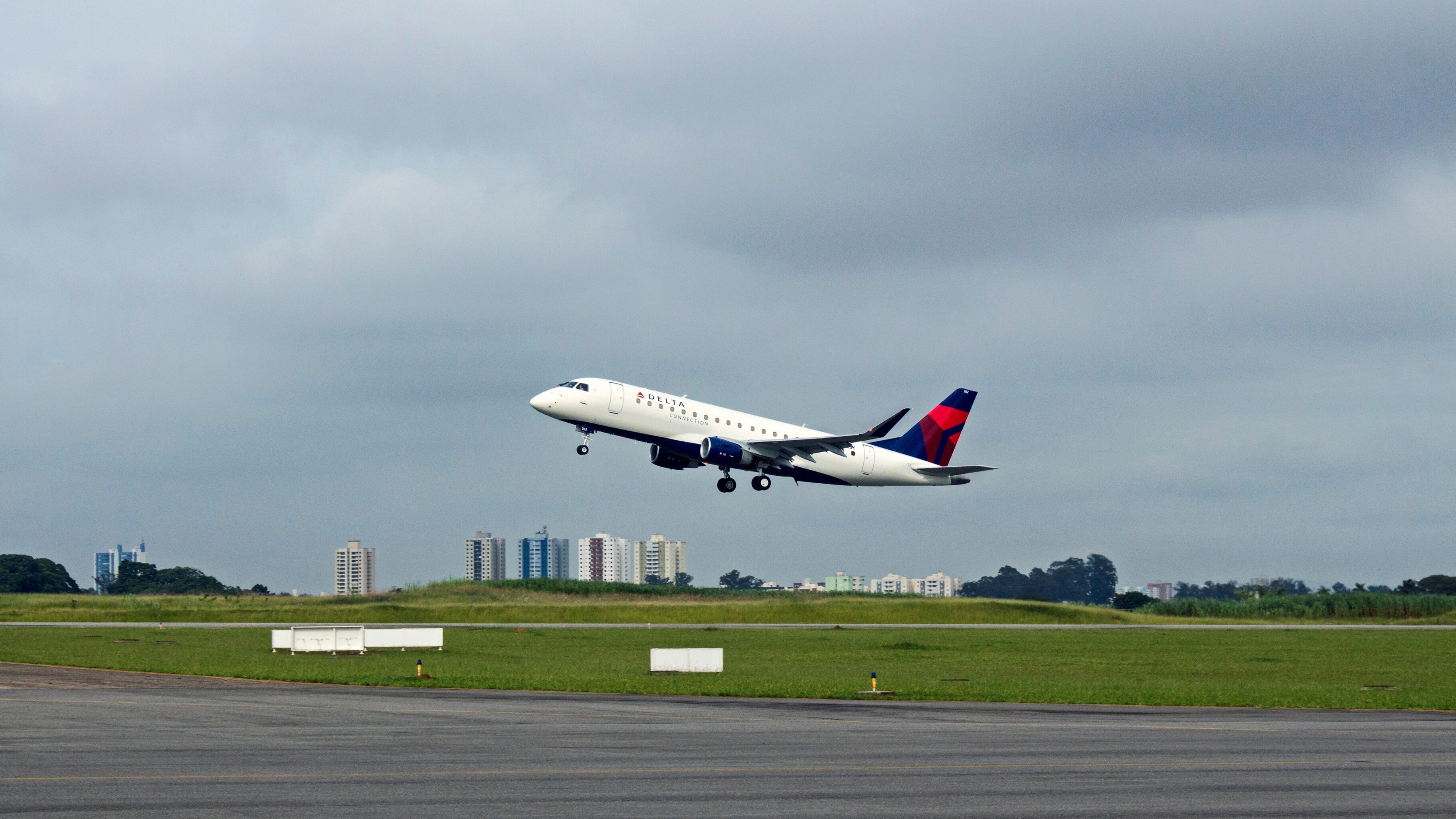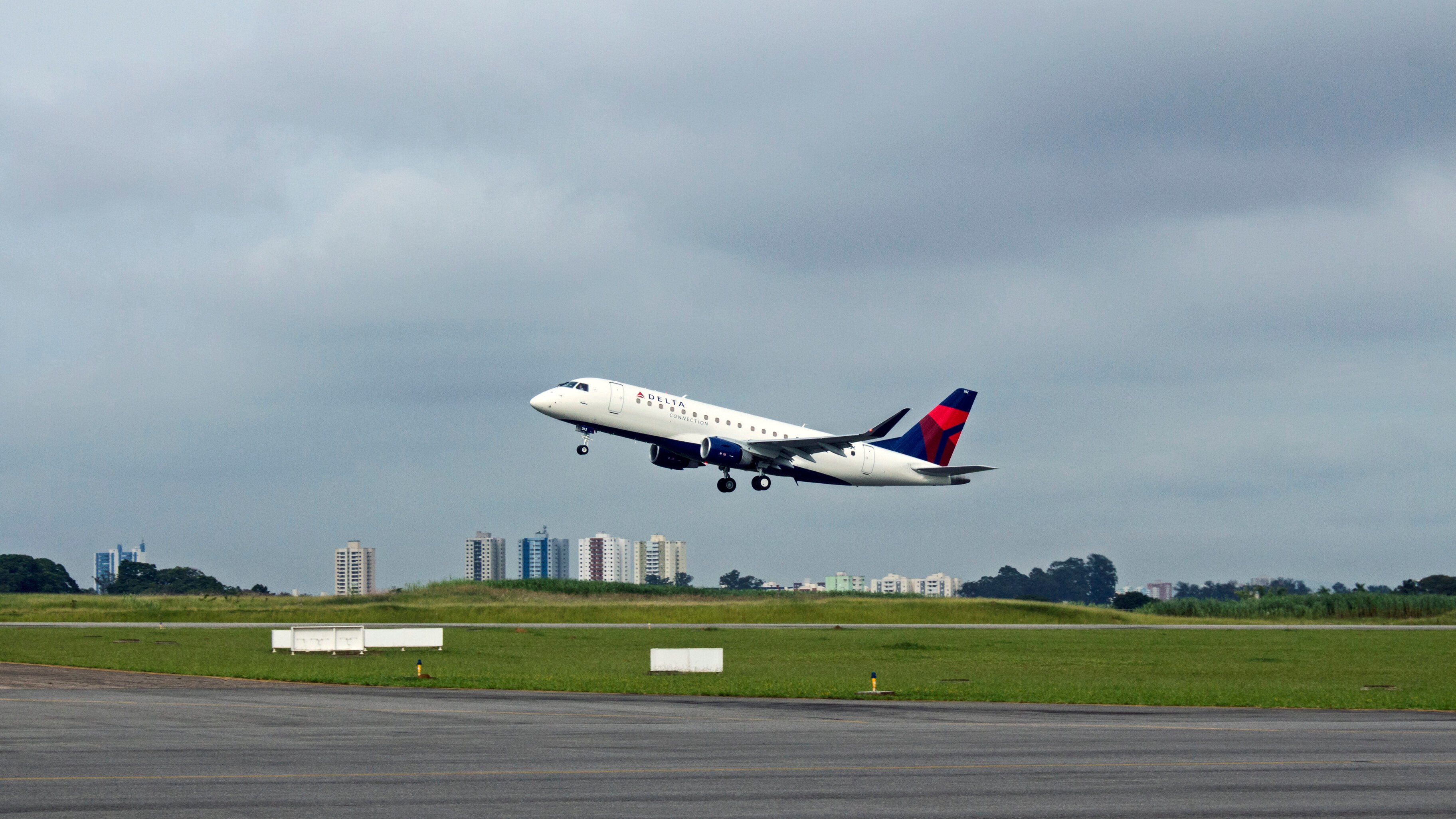Last summer, I described regional airline operator SkyWest (SKYW 0.15%) as a "business under threat" due to its heavy exposure to the 50-seat-jet business. SkyWest currently operates around 500 of these small regional jets for various legacy carriers but particularly Delta Air Lines (DAL 0.23%) and United Continental (UAL 0.67%).
However, 50-seat jets are a dying breed. Delta is in the midst of radically reducing its fleet of small regional jets, having recognized that these little planes burn way too much fuel and are too expensive to maintain. United is finally coming to the same conclusion, and has begun reducing its 50-seat-jet fleet in favor of more profitable 76-seat regional jets.
SkyWest operates about 200 of these larger regional jets today, and this fleet is growing. This part of SkyWest's business is quite profitable. Unfortunately, it is still not clear how long it will take to wind down the 50-seat jet business (or return it to profitability). Until SkyWest manages to fix its 50-seat-jet business, investors should probably stay away.
A tale of two businesses
SkyWest has two main business segments: SkyWest Airlines and ExpressJet. SkyWest Airlines operates a mixed fleet of 50-seat regional jets and larger regional jets, along with a smaller set of 30-seat turboprops. Today, the 50-seat regional jets slightly outnumber the large regional jets, but that situation will be reversed by next year.

SkyWest flies hundreds of 50-seat jets like this one, primarily for Delta and United.
Due to the relatively high proportion of large regional jets in the SkyWest Airlines fleet, along with favorable flying contracts and good labor relations, SkyWest Airlines is solidly profitable. Last year, segment profit was $140 million on revenue of $1.83 billion. That represents a very respectable 7.6% profit margin.
By contrast, 50-seat jets make up more than 80% of ExpressJet's fleet. ExpressJet also has an unfavorable flying contract with United. Lastly, ExpressJet has fairly poor labor relations. Unlike SkyWest Airlines, ExpressJet is heavily unionized, and none of those unions has a long-term contract in place.
As a result, ExpressJet has been stubbornly unprofitable. Last year, ExpressJet lost $49 million on revenue of $1.47 billion. That represented a setback after the company had managed to narrow ExpressJet's loss to $18 million in 2012.
Downsizing the 50-seat-jet fleet
SkyWest's management recognizes that ExpressJet's losses need to be fixed ASAP. On the company's recent earnings call, SkyWest President Brad Rich laid out a three-point plan for returning ExpressJet to profitability.
The first goal is to drive cost reductions through improving labor productivity and getting better deals with vendors. The second goal is to improve operational reliability by putting more spare aircraft throughout the network and instituting new best practices. Both of these programs seem promising and should deliver improved results in the next year or two.
However, the third and most important point is the renegotiation or termination of contracts, and particularly the "legacy ExpressJet contract" with United. This may be harder to pull off successfully. United is unlikely to agree to material rate increases, as the operating economics of 50-seat jets are barely acceptable even at the current below-market rates.
The alternative is for SkyWest to downsize ExpressJet's fleet of 50-seat jets fairly rapidly in the next few years. This scenario seems more likely -- indeed, SkyWest already plans to remove about 50 small regional jets from the combined SkyWest Airlines and ExpressJet fleets in 2014. In the long term, downsizing will end ExpressJet's losses, but SkyWest could bear significant costs in the meantime.
First, SkyWest is locked into long-term contracts on most of its 50-seat jets. Based on the expirations of its current flying contracts, SkyWest's fleet size could fall from about 750 aircraft today to 495 by the end of 2017, with most of the aircraft removals being 50-seat jets. However, that will still leave around 250 of the 50-seat regional jets in service beyond 2017. This is likely to drag out ExpressJet's losses.
Second, even when SkyWest does remove 50-seat jets from the ExpressJet fleet, doing so is not free. The company typically incurs lease return costs when its leases expire. This is usually not very expensive on a one-off basis, but with dozens of airplanes likely to exit the fleet each year, lease return costs could add up.
Foolish wrap
If all of these medium- to long-term headwinds were not enough, SkyWest has also been hit with heavy costs due to weather-related cancellations this year. The company disclosed last week that it had to cancel a stunning 15,000 flights in the first six weeks of 2014, which will depress Q1 pre-tax profit by about $24 million.
Investors shouldn't worry too much about a short-term bump like this one -- the U.S. has had unusually severe weather this year. However, the problems at SkyWest's ExpressJet subsidiary are more troubling. The growing unpopularity of 50-seat jets gives SkyWest's legacy carrier partners little reason to help by renegotiating capacity purchase contracts.
As a result, SkyWest is likely to gradually phase out most of its 50-seat flying by the end of the decade. After it does so, profit is likely to improve. However, there could be a long painful time in between when losses from 50-seat-jet flying drag down companywide profitability. Investors would be wise to wait until there is more clarity on the pace of improvement at ExpressJet before investing in SkyWest,








